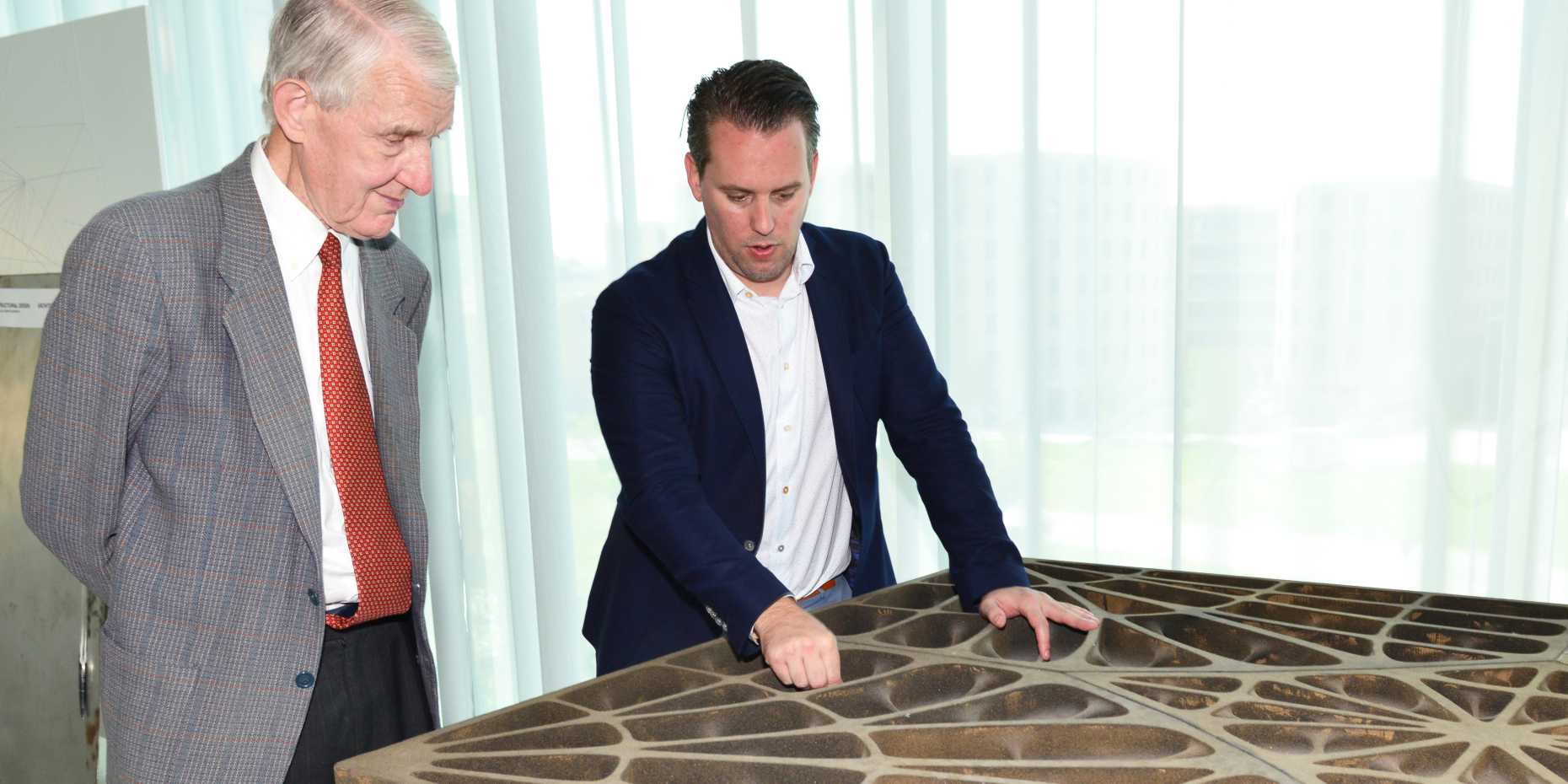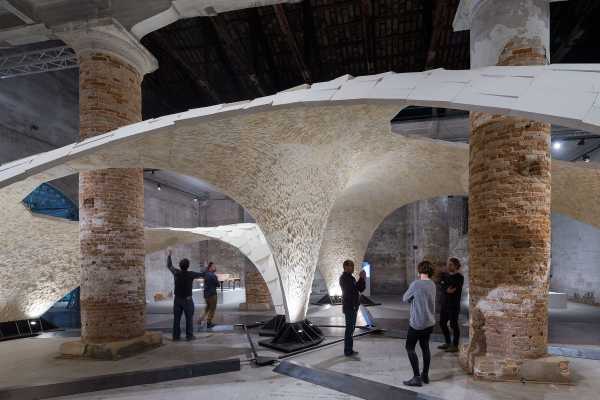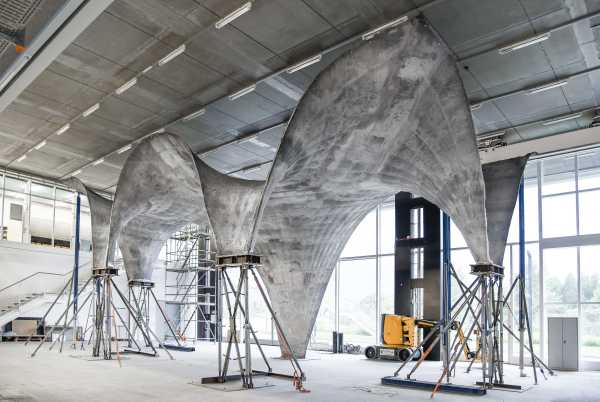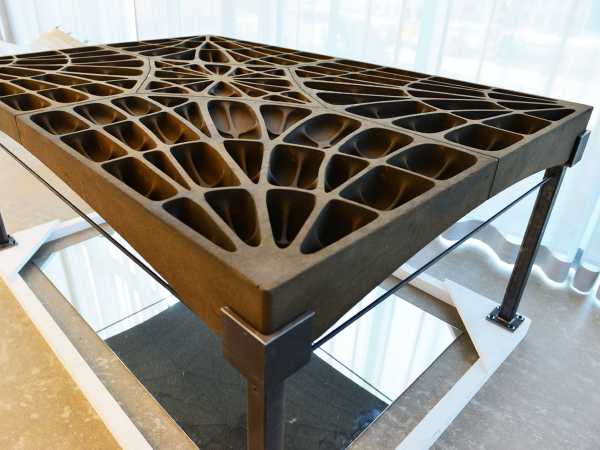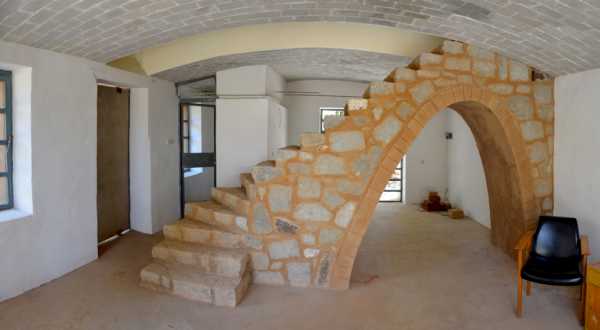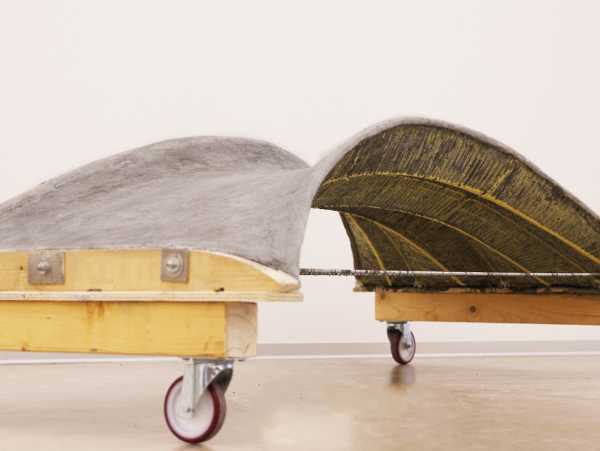Philippe Block awarded the Rössler Prize
Extraordinary and economical: civil engineer and architect Philippe Block develops novel ways of building for the architecture of tomorrow. He has now been awarded the Rössler Prize for his work.
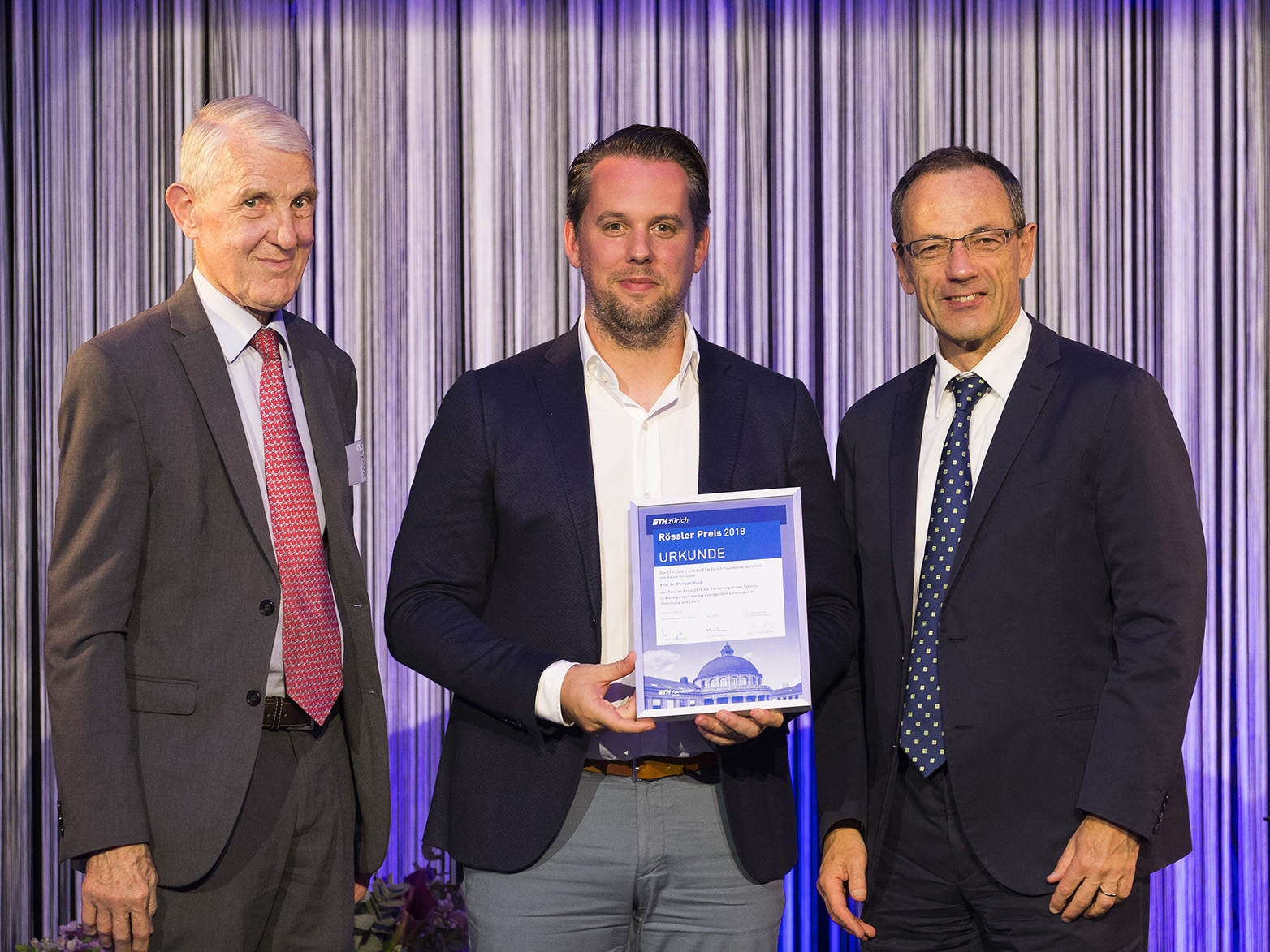
Egg shells are thin, structurally stable and well-proportioned. They are symbolic of how Philippe Block, Professor of Architecture and Structure at ETH Zurich, imagines the building of the future – efficient and aesthetic.
The civil engineer and architect has now been awarded the 200,000 Swiss franc Rössler Prize for his work. Since 2009, the ETH Executive Board has awarded the prize to young professors whose careers are on the rise. In his speech honouring the winner, ETH Zurich President Lino Guzzella described Block as “both an architect and an engineer. We see this clearly in his curved roofs, where he unites aesthetic expression with the perfect geometry – all while minimising the use of materials.”
The prize was established by Max Rössler, an ETH alumnus and mathematician. Rössler donated a larger sum to the ETH Zurich Foundation, with the proceeds used to fund the award given by ETH Zurich. Rössler finds Block’s ideas impressive: “His work shows quite clearly how much untapped potential there is in contemporary architecture.” Block says: “I am delighted that my work has been recognised. I know how stiff the competition is at ETH Zurich. The prize allows me and my team to push forward our architectural innovations even faster.”
Digital methods, historical inspiration
Block and his team are looking for new structural forms and constructional systems that would allow materials to be used more efficiently. He takes inspiration from historical building principles, most of which have been replaced after the introduction of new building materials such as reinforced concrete and have thus been forgotten. Some of Block’s favourite examples include the vaults in Gothic cathedrals or Catalan vaults made from thin bricks.
Together with Co-Director Tom Van Mele, he uses computational methods to re-invent these building techniques of the past. With specially developed algorithms, the Block Research Group calculates how compression forces can be optimally distributed through a structure. This results in diverse shapes and systems, which often require no mortar or reinforcement and can bear heavy loads with little material. Block explains: “Also in the past expressive structures resulted from the need for economy. Efficiency doesn’t have to be boring.”
Block’s most famous works include the Armadillo vault for the Venice Architecture Biennale 2016, and the ultra-lightweight, unreinforced, rib-stiffened floor elements and sinuous concrete roof for the experimental HiLo building on the NEST platform.
An economical building standard
Block believes that architects and engineers have to use natural resources responsibly: “We can’t keep building as we are today, or we’ll run out of resources in the near future.” Standard reinforced concrete construction, for example, uses a lot of sand, and cement production generates a huge amount of CO2. Formwork material, especially for non-standard constructions, is often used just once and then discarded.
In Ethiopia’s Addis Ababa, Block and his team also worked on a house that was made primarily from local materials, was cheap to build and has a minimal carbon footprint. The house, known as the Sustainable Urban Dwelling Unit, was designed in collaboration with architect Dirk Hebel. Block’s team built the floor slab: a flat vault of thin bricks made entirely from Addis Ababa’s clay-rich earth and constructed by local workers.
Works by Philippe Block
Knitted rather than timber formwork
Since June 2017, Block has also been Director of the National Centre of Competence in Research in Digital Fabrication (NCCR DFAB). He says: “Digital fabrication and robots are often used to achieve new, even crazier shapes. However, in my opinion, the focus lies elsewhere: digital fabrication will allow us to create efficient building structures, questioning the status quo and making the way we build more economical.”
Block’s group is currently carrying out research into new approaches for realising concrete structures. An example of this can be found in front of Block’s office: a small, arched concrete bridge cast on a super-lightweight knitted textile tightened with flexible rods. In the future, this method will make it possible to build light, complex structures out of concrete without the need for expensive or waste-intensive formwork.
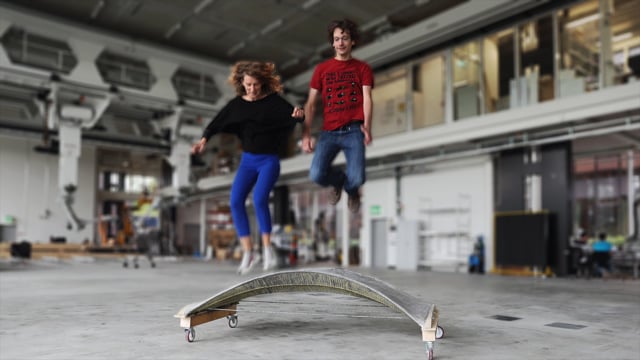
Civil engineer and architect
Block integrates several different fields into his work, including construction technology, architectural design, civil engineering and computer science. He studied architecture and civil engineering at the Vrije Universiteit Brussel. In 2009, Block completed a PhD at MIT in Cambridge, Massachusetts, and was then appointed Assistant Professor at ETH Zurich. In 2014, he became Associate Professor of Architecture and Structure at the Institute of Technology in Architecture (ITA) and was awarded his full professorship in 2017.
Block has received many prizes and awards for his work, most recently in January 2018 the Berlin Art Prize for Architecture. In 2012, he won the Edoardo Benvenuto Prize and was awarded both the Tsuboi Award and the Hangai Prize from the International Association of Shell and Spatial Structures (IASS) in 2010 and 2007 respectively.
Max Rössler Prize
In 2008, Max Rössler bequeathed ten million Swiss francs to ETH Zurich Foundation. The interest earned on the capital is used to fund an annual prize for ETH professors who are “rising stars” in their particular area of research. Worth 200,000 Swiss francs, it is ETH Zurich’s most generous research award and is presented at an annual Thanksgiving event held by the external pageETH Zurich Foundationcall_made. Max Rössler studied mathematics at ETH Zurich and wrote his doctorate on orbit calculations in space travel. After a spell as guest researcher at Harvard University, he returned to ETH, where he was a senior scientist and lecturer at the Institute of Operations Research from 1967 to 1978. He later worked in wealth management before retiring from business life.

